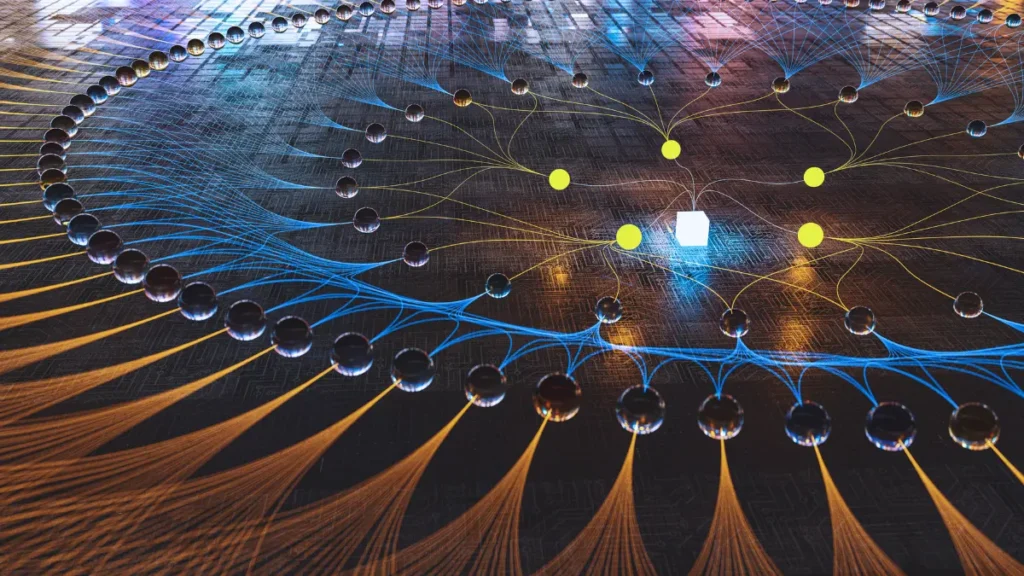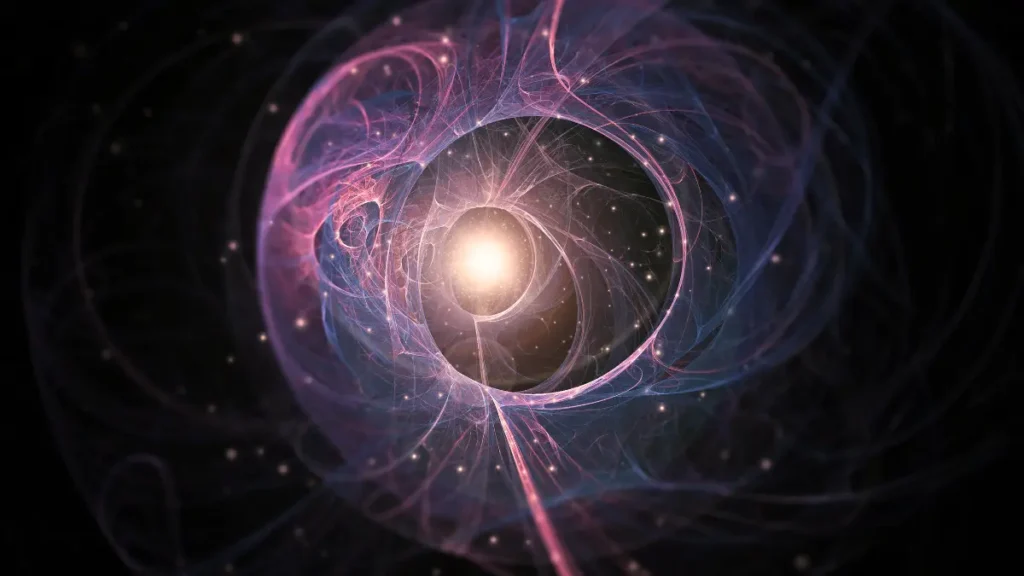Introduction to Quantum Physics: Have you ever wondered how the world works on the smallest scale? Quantum physics reveals a strange realm where particles can act like waves and seemingly occupy two places at once. Though the concepts seem bizarre, quantum theory has enabled huge advances in technology and our understanding of the universe. This introduction to quantum physics for beginners will guide you through the key ideas without complex math. We’ll explore mind-bending concepts like wave-particle duality, uncertainty, and entanglement in plain terms.
You’ll learn about pioneering scientists like Planck, Einstein, Bohr, and Schrödinger. Quantum physics overturned centuries of assumptions and unlocked the secrets of atoms, radiation, and more. Join me on a journey into the quantum world, where common sense gives way to probability, superposition, and spooky action at a distance. With an open mind, you’ll gain insight into the fundamental workings of reality. Understanding quantum theory’s counterintuitive logic is a thrill ride full of “a-ha” moments. Let’s boldly go where few have gone before, one tiny particle at a time.
What Is Quantum Physics?

Quantum physics is the study of the behavior of matter and energy at the molecular, atomic, nuclear, and even smaller microscopic levels. It reveals that the physical principles that govern small particles are very different from the classical physics used to understand the macroscopic world. This branch of physics aims to understand the nature of the particles that make up atoms and how they interact.
Particle-Wave Duality
One of the core ideas of quantum physics is that particles can act as both particles and waves. This is known as particle-wave duality. According to quantum theory, all matter exhibits properties of both particles and waves. For example, electrons can behave as particles, but they also have wave-like properties such as diffraction and interference.
The Uncertainty Principle
Another important concept in quantum physics is the uncertainty principle. This states that we cannot know the position and momentum of a particle simultaneously with infinite precision. There is always some uncertainty in our measurements. The more precisely we measure a particle’s position, the less precisely we know its momentum, and vice versa.
Quantum Entanglement
Quantum entanglement is a strange effect where quantum particles become “entangled” and their properties depend on each other, even if the particles are separated by a large distance. When particles become entangled, their quantum states are linked. So, if you measure a property of one particle, such as spin, you instantly know the corresponding property of the other particle. No matter how far apart the particles are, they will always be in this quantum connection.
Quantum physics is a fascinating branch of modern physics that scientists are still trying to fully understand. But it has already led to many applications such as quantum computing, quantum cryptography, and more. The quantum world is strange and bizarre, yet it governs the world we see around us each and every day.
The History of Quantum Theory and Mechanics
The classical theories of physics just couldn’t explain everything. By the early 1900s, scientists were scratching their heads over observations that didn’t match up with the laws of classical mechanics. You’ve probably heard of some of the weird quantum phenomena like the photoelectric effect, where light was acting as particles, and the wave-particle duality of matter. Something new was clearly needed.
In 1900, Max Planck hypothesized that energy comes in small, discrete packets called quanta. A few years later, Einstein used the idea of quanta to explain the photoelectric effect. Light, it seemed, could behave as both a wave and a particle. This revelation that the natural world is far stranger than we imagine launched the quantum revolution.
Niels Bohr proposed a model of the atom with electrons orbiting the nucleus in discrete energy levels. But how did electrons move between levels without radiation? Bohr’s model couldn’t explain it. The answer came in Erwin Schrödinger’s wave equation, which described the wavelike behavior of particles and the probability of finding them in a location. According to the Copenhagen interpretation, particles exist in a superposition of states until measured. Spooky!
In the 1920s, physicists like Louis de Broglie, Werner Heisenberg, and Richard Feynman developed quantum mechanics into a robust theory. It gave us new rules for how nature works at the smallest scales, with probabilities and uncertainties instead of definite positions and momenta. Though strange, quantum theory has been tremendously useful. It’s given us lasers, transistors, MRI machines, and dreams of quantum computing.
After a century of experiments confirming its bizarre predictions, quantum mechanics has proven itself. Although it remains mysterious in many ways, this hugely important theory opened the door to the modern technological world. Understanding its historical development and weird implications is key to appreciating how far physics has come. The quantum revolution changed science forever.
Wave-Particle Duality – A Cornerstone of Quantum Physics
Wave-particle duality is a strange yet fundamental concept in quantum physics. It means that matter and light exhibit properties of both particles and waves. This seems impossible based on our everyday experience, but it has been shown to be true through countless experiments.
The Wave Nature of Matter
In the early 1900s, scientists were stumped by findings that electrons, traditionally thought of as particles, also behaved like waves. Louis de Broglie proposed that not just light, but all matter has wave-like properties. His idea was supported by experiments showing interference patterns when electrons were fired at crystals, just like the patterns made by light waves. This demonstrated the wave nature of even the smallest bits of matter.
The Particle Nature of Light
Light was long thought to be a wave, but Einstein showed that it also behaves like tiny particles called photons. When UV light hits metal, it causes electrons to be ejected, but only in small, fixed amounts of energy. This photoelectric effect could only be explained if light energy was quantified into particle-like photons. Wave-particle duality means that light and matter have a dual nature, sometimes acting like waves and sometimes like particles.
A Cornerstone of Quantum Theory
The strange idea of wave-particle duality is a foundation of quantum theory. It shows that the classical concepts of particles and waves break down at the smallest scales. Quantum objects do not have defined properties until they are measured, and they can exist in a superposition of multiple states at once. Wave-particle duality is deeply bizarre but has been demonstrated time and again in experiments. It reveals a strange quantum world that is fundamentally different from our everyday experience.
Wave-particle duality shook the foundations of physics but opened the door to a new understanding of reality. By embracing this strange concept, scientists were able to develop quantum mechanics and make huge progress in fields like quantum computing, quantum optics and more. Though perplexing, wave-particle duality provides insight into the bizarre workings of the quantum world.
Schrödinger’s Equation and Quantum Phenomena

To understand quantum physics, you must first understand Schrödinger’s equation. Proposed by Erwin Schrödinger in 1926, this equation describes how the quantum state of a physical system changes with time.
Schrödinger’s equation represents the wave function of a quantum system. The wave function contains information about the probability of finding a particle at a particular location. When solved, Schrödinger’s equation can predict the likely results of experiments and observations.
Some of the strange yet fascinating phenomena predicted by Schrödinger’s equation include:
Quantum Superposition
According to the equation, quantum particles can exist in a superposition of states until they are measured. For example, a quantum particle can act as both a particle and a wave at the same time. However, the act of measuring the particle causes its wave function to “collapse” into a definite state.
Quantum Entanglement
Schrödinger’s equation also showed that multiple quantum particles can become “entangled” such that actions on one particle have an instantaneous effect on the other, even if they are separated by a large distance. When particles become entangled, their quantum states are linked. So, measuring a property of one particle immediately determines the corresponding property of the other.
The Uncertainty Principle
The equation demonstrated that we cannot know the position and momentum of a particle simultaneously with infinite precision. There is always some uncertainty in our measurements. The more precisely we measure a particle’s position, the less precisely we can determine its momentum, and vice versa.
Schrödinger’s revolutionary equation laid the groundwork for many of the strange yet important concepts in quantum mechanics. Even today, scientists are still exploring the bizarre implications of Schrödinger’s equation and making new discoveries in the quantum world.
Uncertainty Principle and Quantum Effects
Have you ever wondered why we can’t know the exact position and momentum of an electron at the same time? This puzzling feature of the quantum world is explained by Heisenberg’s uncertainty principle. According to this principle, it is impossible to determine the position and momentum of a particle simultaneously with infinite precision. There will always be some uncertainty in our measurements.
The uncertainty principle shows that quantum particles behave in a strange way that is very different from our everyday experience. They do not have defined positions and momenta that we can measure precisely and simultaneously. This inherent uncertainty arises from the dual wave-particle nature of quantum objects. Quantum particles behave as both particles and waves. As waves, they do not have a defined position, and as particles, they do not have a defined momentum. This means that the more precisely we measure the position of a quantum particle, the less precisely we know its momentum, and vice versa.
Quantum Superposition
Another bizarre quantum effect is the phenomenon of superposition. Quantum particles can exist in a superposition of multiple states until they are measured. For example, a quantum particle can spin in both clockwise and counter-clockwise directions at the same time. However, once it is measured, it gives only one result. This is known as the collapse of the wave function. The act of measurement causes the superposition to collapse into a definite state.
Before measurement, the quantum particle exists in a haze of probability. There is a certain probability that it will be measured to have clockwise spin, and another probability it will have counter-clockwise spin. But it does not have a definite spin orientation until it is measured. This is a very strange feature of the quantum world that has no analogy in our everyday experience. Superposition is a fundamental feature of quantum mechanics that underlies many of the strange behaviors of the quantum world.
The uncertainty principle and quantum superposition show that the quantum realm is a strange place indeed. Quantum particles do not behave as common sense and classical physics would expect. They exhibit bizarre behaviors that reveal the deep mysteries of physics at the smallest scales. Coming to terms with these quantum effects has been one of the great challenges in the development of quantum theory.
Applications of Quantum Physics
Quantum Computing
One of the most promising applications of quantum physics is quantum computing. Conventional computers store information as bits, which can have a value of either 0 or 1. Quantum computers utilize quantum bits or ‘qubits’ that can exist in a superposition of states, representing a 0 and 1 simultaneously. This allows a quantum computer to perform calculations on all possible combinations of 0s and 1s at the same time.
Quantum Cryptography
Quantum cryptography utilizes the properties of quantum physics to enable perfectly secure communication. It allows two parties to produce a shared random secret key known only to them, which can then be used to encrypt and decrypt messages. An important application of quantum cryptography is quantum key distribution. This enables two parties to produce a shared random secret key using a quantum communication channel. If an eavesdropper tries to measure the quantum states used to generate the key, it causes detectable changes that allow the key distribution to be aborted before an insecure key is produced.
Quantum Sensing
Quantum sensing utilizes the properties of quantum physics like superposition and entanglement to achieve high precision measurements. Examples of quantum sensors include quantum gravimeters that can measure gravitational fields with high precision, quantum gyroscopes that can detect very small changes in rotation, and quantum clocks that are the most precise timekeepers ever built. These quantum sensors have many applications like finding underground resources, navigation systems with high precision, and synchronizing telecommunication networks.
The strange yet fascinating properties of the quantum world are enabling some truly revolutionary technologies. While still in their infancy, quantum computing, quantum cryptography, and quantum sensing have the potential to profoundly impact many areas of science and society. As researchers gain a better understanding of quantum physics and how to control it, these applications are likely to mature and become an integral part of our technological infrastructure.
Quantum Computing and Quantum Bits

The Quantum Bit
The fundamental unit of quantum information is the quantum bit or qubit. Unlike a classical bit which can only be in a state of 0 or 1, a qubit can be in a superposition of both 0 and 1 at the same time. This allows a quantum computer to perform calculations on both 0 and 1 simultaneously.
A qubit is usually realized as a two-level quantum system, such as the spin of an electron or the polarization of a photon. The quantum state of a single qubit can be represented as a vector on a sphere, known as the Bloch sphere. By manipulating the qubit with quantum gates, we can perform quantum logic operations on the qubit and change its state.
Quantum Parallelism
One of the most exciting features of quantum computing is quantum parallelism. Because a qubit can exist in a superposition of 0 and 1, a quantum computer with n qubits can exist in a superposition of 2^n states at once. This allows a quantum computer to explore and perform calculations on an exponentially large computational space in parallel.
For example, 300 qubits could represent more states than there are atoms in the observable universe. This massive quantum parallelism could allow quantum computers to solve certain problems much faster than classical computers. However, the quantum states are fragile and easily decohere into classical states, limiting the capabilities of current quantum computers.
Applications of Quantum Computing
Some promising applications of quantum computing include:
- Quantum simulation: Simulating quantum systems and molecules to help design new materials and drugs.
- Optimization: Finding the best solution to complex optimization problems that even the largest supercomputers struggle with.
- Machine learning: Developing new quantum machine learning algorithms to solve complex pattern recognition problems.
- Codebreaking: Using Shor’s algorithm to break RSA encryption, which secures internet communications.
- Quantum physics: Helping physicists develop and test new theories of quantum gravity.
Quantum computing is an exciting new field that could help solve some of the world’s most complex problems. But we still have a long way to go to build a large-scale, fault-tolerant quantum computer. Quantum bits and quantum gates need to become much more stable and precise before the promise of quantum computing can be fully realized.
The Future of Quantum Physics
If you thought quantum physics was weird, just wait until you see what the future holds. As our understanding of quantum mechanics expands, we’re finding new ways to harness its strange properties for computing, cryptography, and more.
One exciting area of research is quantum computing. Traditional computers use bits that can be either 0 or 1, but quantum computers use “qubits” that can be 0, 1, or a superposition of both. This allows quantum computers to solve certain problems much faster than regular computers. Tech giants like Google, IBM, and Microsoft are working on early quantum computers that could eventually revolutionize fields like artificial intelligence, drug design, and machine learning.
Quantum physics also enables new forms of secure communication through quantum cryptography. Because measuring a quantum system disturbs it, quantum cryptography allows two parties to detect eavesdropping. China recently launched a satellite to test quantum cryptography over long distances, and companies are working on commercial quantum cryptography products.
In the coming decades, quantum physics may also power new technologies like quantum sensors, quantum batteries, and even quantum teleportation. While teleporting entire humans is probably not realistic, scientists have already teleported tiny particles across short distances. As we gain a better understanding of entanglement, the weird quantum effect that links two particles even when separated, teleportation at larger scales could become possible.
The future of quantum physics is both strange and exciting. As researchers continue to explore the quantum realm, we’ll gain a deeper understanding of reality at its most fundamental level. And along the way, we’ll likely discover more quantum technologies that were once only science fiction. The weirdness of the quantum world means the future will be filled with surprises. So fasten your seatbelts – with quantum physics, the ride is only going to get bumpier from here!
FAQs About Introduction to Quantum Physics
As a beginner learning about quantum physics, you probably have a lot of questions. Here are some of the most common FAQs to help you understand the basics.
What is quantum physics? Quantum physics is the study of matter and energy at the molecular, atomic, nuclear, and even smaller microscopic levels. It reveals that the microscopic world is very strange and different from our everyday classical world.
What is the difference between classical and quantum physics? Classical physics describes the behavior of objects in our everyday world, while quantum physics describes the behavior of matter and energy at the molecular, atomic, and subatomic scale. Some key differences are:
•In classical physics, objects have defined positions and trajectories, but in quantum physics, objects exist in a superposition of states and have probabilities of being in certain positions.
•In classical physics, objects have defined values of properties like position, momentum, energy, etc. But in quantum physics, these properties have indeterminate values until they are measured.
•Classical physics follows deterministic laws, but quantum physics incorporates probability and uncertainty.
What is the wave-particle duality? One of the central ideas of quantum physics is that all matter exhibits characteristics of both particles and waves. This is known as the wave-particle duality. For example, light acts as a particle (photon) in the photoelectric effect but acts as a wave in the double-slit experiment. Electrons also show wave-like interference in the double-slit experiment but still behave like particles in other experiments.
How is quantum physics used today? Quantum physics underlies many modern technologies like transistors, lasers, electron microscopes, MRIs, and more. It is also enabling many emerging technologies like quantum computing, quantum cryptography, and quantum sensors. So studying quantum physics is key to understanding our world and developing new technologies.
While quantum physics seems bizarre, its effects have been demonstrated experimentally many times. The quantum world is strange yet fascinating, and exploring it can lead to many surprises and insights. Keep reading to journey deeper into this weird yet wonderful realm!
Conclusion
So there you have it – a quick introduction to the weird and wonderful world of quantum physics! While it can seem complex at first, the basic ideas of quantum theory have revolutionized our understanding of reality. By embracing the counterintuitive principles of superposition, entanglement, and uncertainty, physicists have opened pathways to developing groundbreaking technologies like quantum computing and cryptography. Though the tiny scale of quantum phenomena may seem esoteric, these effects touch everything in the cosmos.
From the smallest subatomic particles to the vast reaches of the universe, quantum mechanics underpins all existence. We’ve only just begun to grasp the implications of this new physics. Who knows what innovations the quantum realm has in store? If this primer has piqued your curiosity about the foundations of our quantum world, dive in deeper – a universe of knowledge awaits!



